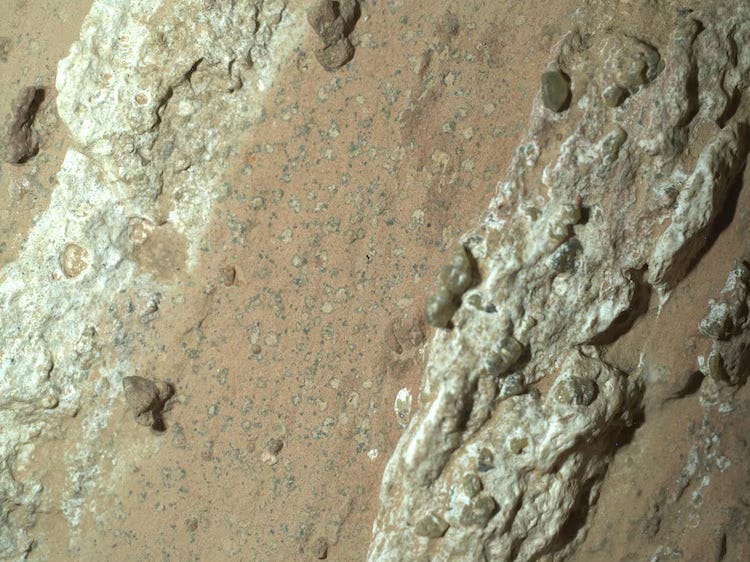Life on Mars? Perseverance Finds Rock with Potential Signs of Ancient Life
NASA’s Perseverance rover has collected a Mars rock sample with intriguing chemical signatures that may point to ancient microbial activity—an exciting lead, but not proof.
Here’s the TL;DR…
Perseverance’s “Cheyava Falls” rock, collected in July 2024, shows leopard‑like spots that could be biosignatures from ancient microbes.
The sample contains organic material and chemical reactions associated with life on Earth, but NASA stresses this is not definitive.
Scientists are energized yet cautious and say Earth‑based analysis is needed because rover instruments have limits.
The Discovery: Cheyava Falls Rock
While exploring Jezero Crater’s Neretva Vallis—an ancient riverbed—Perseverance drilled into a reddish rock nicknamed “Cheyava Falls” in July 2024. The cored sample, “Sapphire Canyon,” revealed leopard spots—white splotches rimmed with black—that hint at chemical reactions potentially linked to ancient microbes. CNN’s September 10, 2025 report says these features could indicate water flow and organic compounds, key ingredients for life. NASA’s September 9, 2025 update highlights the rock’s arrowhead shape and intriguing composition, calling it one of the rover’s most promising finds to date.
Biosignatures: What They Mean
Analyses point to organic material and reactions that, on Earth, are tied to microbial life—similar to patterns in ancient Australian rocks. NASA cautions that non‑biological processes could also produce these signals. National Geographic calls the sample “the best evidence yet,” while stressing that confirmation requires bringing the material to Earth.
Perseverance’s Role and Next Steps
Perseverance targeted Jezero for its ancient lake bed. According to NASA the rover collected the sample amid ongoing exploration. The mission has gathered 25 core samples since 2021, with Cheyava Falls standing out for its biosignature potential. NASA plans an eventual Mars Sample Return, though delays could push analysis into the 2030s.
Scientific Excitement and Caution
Experts are enthusiastic but measured. Some NASA scientists are calling this the “clearest sign” yet, while underscoring non‑life explanations must be ruled out. The discovery, if confirmed to be organic in nature, has the potential to reshape Mars’ history.
Implications for Life on Mars
If confirmed, the sample would suggest ancient microbial life once existed on Mars. While this doesn’t confirm current life, it shows that there was possible past activity. Space.com reiterates that only Earth‑based labs can definitively disentangle biological from geological processes.
News compiled and edited by Derek Gibbs and Steven Bubbles on September 12, 2025. Follow us on ClownfishTV.com for more gaming, pop culture and tech news, and consider subscribing for only $5 per month to get access to exclusive podcasts and other content.
Sources
NASA.gov, “NASA Says Mars Rover Discovered Potential Biosignature Last Year,” September 9, 2025
CNN, “Martian rock contains ‘clearest sign’ of ancient life on Mars, NASA says,” September 10, 2025
Sky at Night Magazine, “NASA rover finds potential evidence of ancient, alien microbial life on Mars,” September 11, 2025
National Geographic, “This is the best evidence yet for ancient life on Mars,” September 10, 2025
NBC News, “NASA says rock sample from Mars has potential ‘biosignature’ of life,” September 10, 2025
Space.com, “Did NASA’s Perseverance rover find evidence of ancient life on Mars? The plot thickens,” September 10, 2025
Planetary.org, “NASA: Perseverance found possible biosignatures in Martian rock,” September 11, 2025
Axios, “Mars rock contains "clearest sign" yet of potential past life on Red Planet, NASA says,” September 11, 2025
ABC News, “Rock found on Mars could be evidence of ancient life, NASA says,” September 10, 2025



